Northern Parula (Setophaga americana) is a “very small and active” bird, says The Warbler Guide. At 4.3 to 4.7 inches long, they’re bigger than the 3.5 to 4.3 inch Ruby-crowned Kinglet (Corthylio calendula) but smaller than the 4.7 to 5.1 inch Red-eyed Vireo (Vireo olivaceus).
Lucy’s (Leiothlypis luciae) and Wilson’s (Cardellina pusilla) are famously small warblers, but the Northern Parula is “one of the smallest and most distinctly marked.”
The bird is bluish gray with a yellow patch on its back. The breast is yellow and so is the throat—like a bright goatee. Males have a brownish band on the breast.
You might be saying “Parula” wrong. I did for years.
American Bird Conservancy explains: “birders say, ‘Look, there's a Northern ‘Pa-RU-la,’ or ‘PAIR-a-la,' or ‘PAR-ya-la.’” You might find arguments for “‘PAR-you-lah,’ and ‘PAR-a-la.’ Either way, the accent is on the first syllable.”
A birder saw me taking photos.
“What’ve you got?”
“Parula”—PAR-a-la.
“What?”
I repeated, still accenting the first syllable.
“Oh nice, Parula.”—Pa-RU-la.
No time for pedantry during migration, I confirmed and we watched.
The Northern Parula eschews the descriptive/eponymous avian naming convention. The word Parula is “a diminutive form of parus, meaning little titmouse.”
I’m glad it’s not an eponym, but the Northern Parula even thumbs its nose at practical, descriptive nomenclature—as with Yellow (Setophaga petechia), which are yellow, and Black-and-white Warblers (Mniotilta varia), which are black and white.
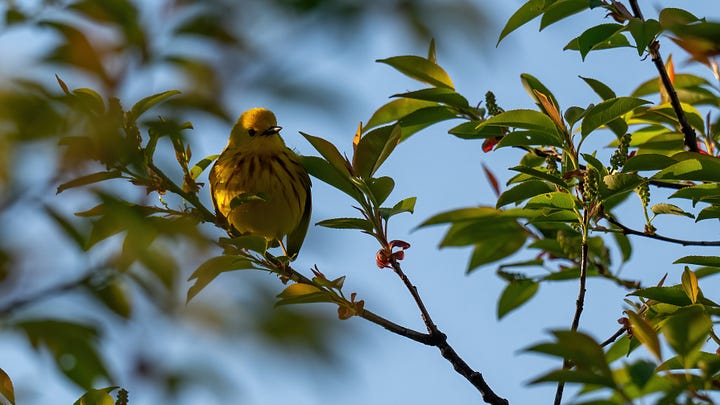
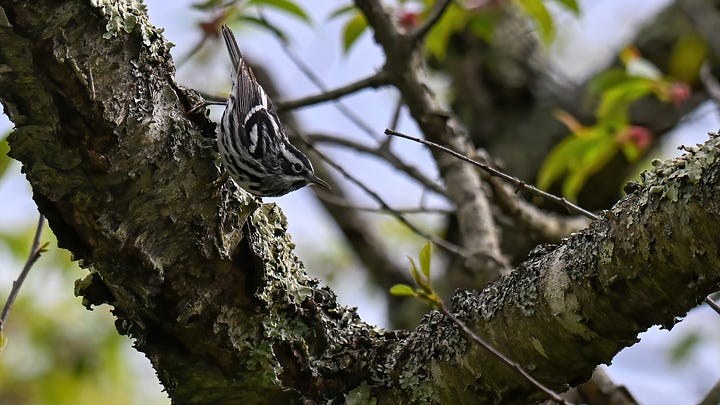
It’s fun that the Parula’s name offers something different. It used to be called finch creeper. In John James Audubon’s Birds of America it’s listed as Blue Yellow-backed Warbler so hasn’t entirely ducked descriptive names.
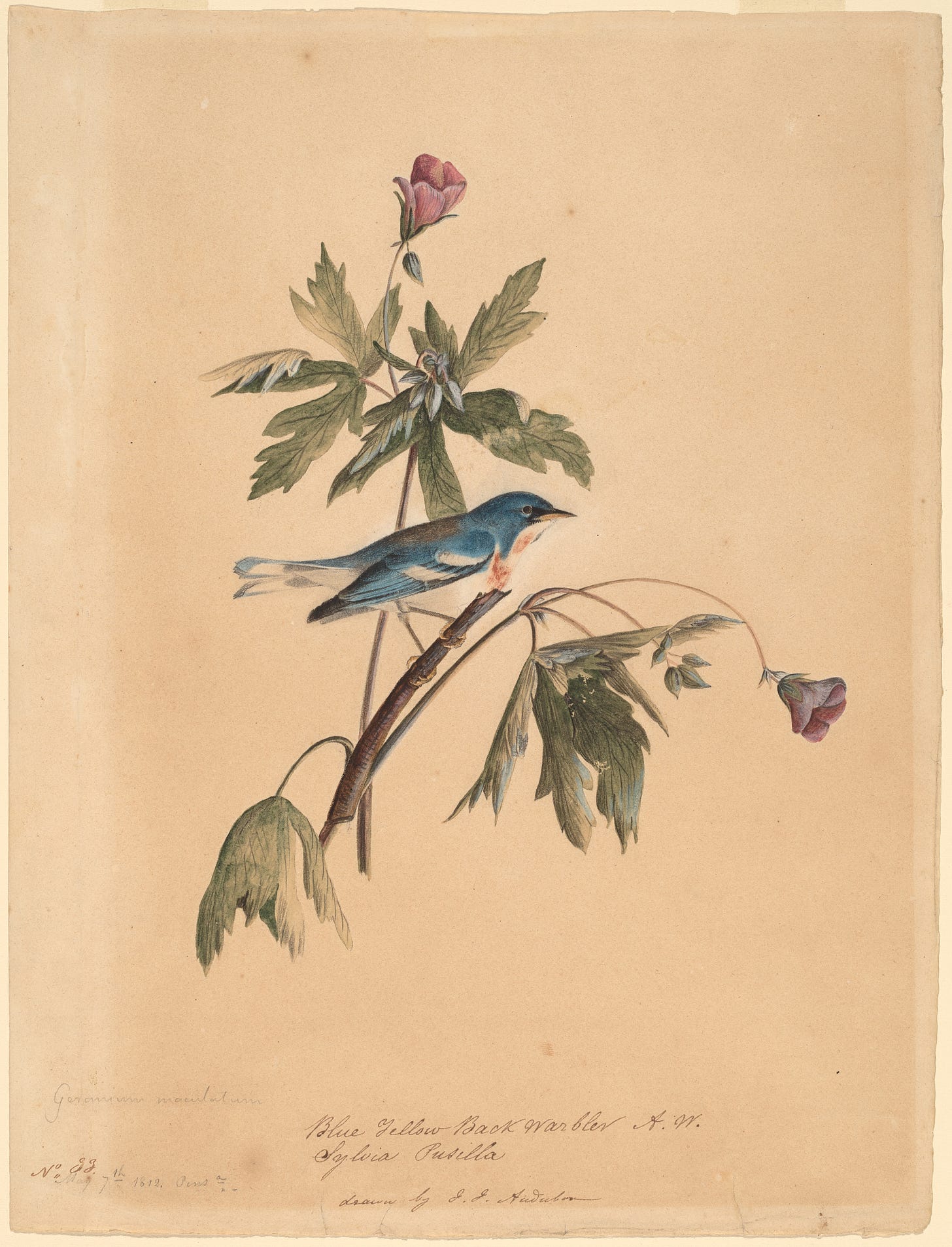
What other features stick out? Yellow throat and breast, white eye crescents and wing bars.
The wing bars and eye crescents help differentiate the Parula from the Nashville Warbler (Leiothlypis ruficapilla). It’s so named because Alexander Wilson first encountered the species near Nashville. The Nashville Warbler has a complete eye-ring, no wing bars, and a fully yellow belly versus the Parula’s white.
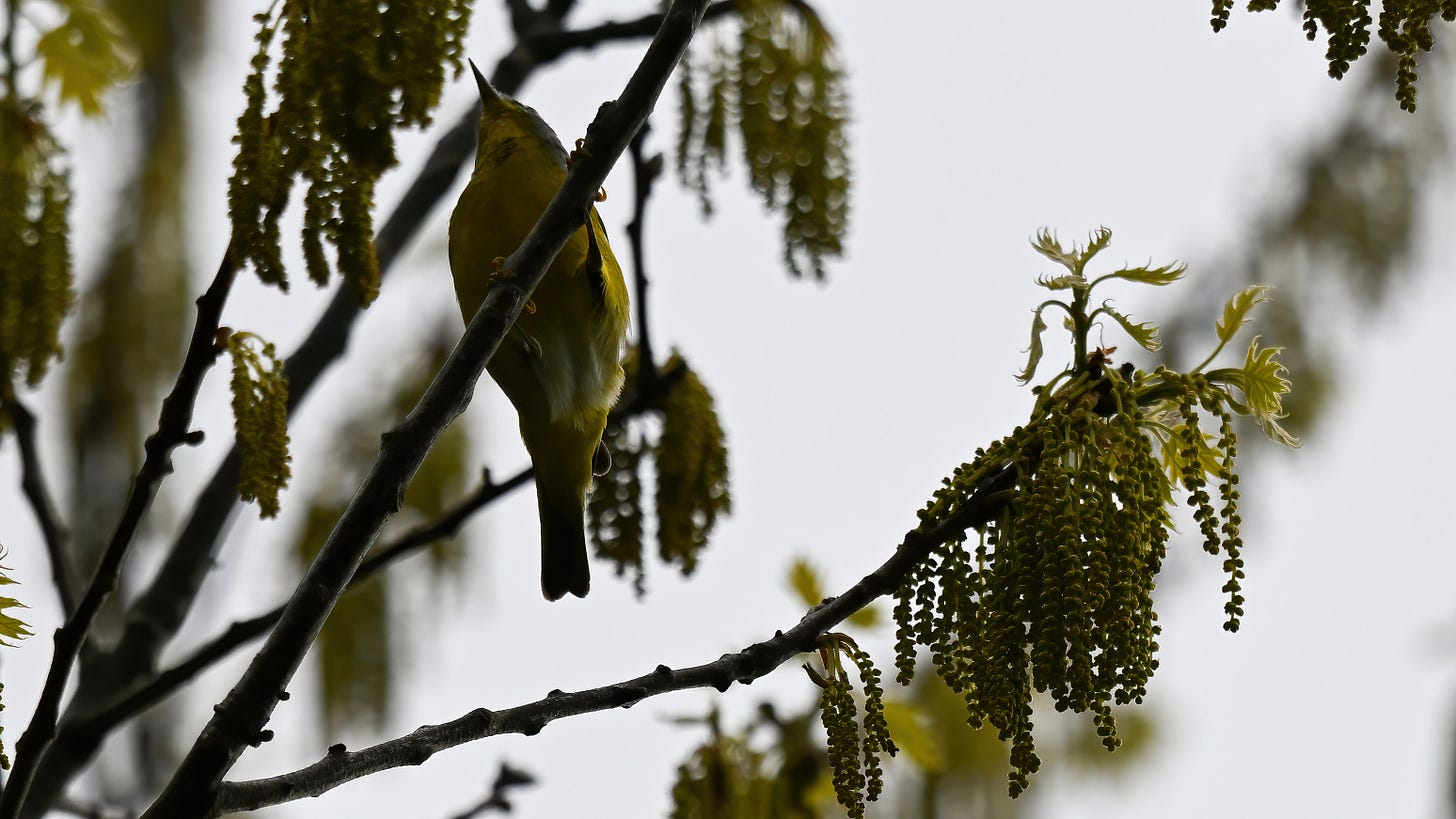
The Northern Parula makes buzzy sounds. Mainly males sing, females do sometimes.
Most widely known is the Parula’s trilling crescendo. Males sing from spring to late July. Mass.gov calls the song “a buzzy, ascending trill, ending with an abrupt, explosive note: ‘swee swee swee swee swee-Zip!’”
While the trill is commonly known, the Parula sings another song with “distinct pauses in between bouts of the rising buzzy trill.”
The Northern Parula is “widespread and common,” with stable numbers. American Bird Conservancy lists the population at 18 million and increasing.
Northern Parula aren’t always easy to see, they’re often foraging high in the foliage. At least difficulty seeing them isn’t because of poor population numbers.
There are plenty Northern Parula (Setophaga americana) to see or hear.
ID Quiz:
Nashville, Parula, something else? Answer in the comments.





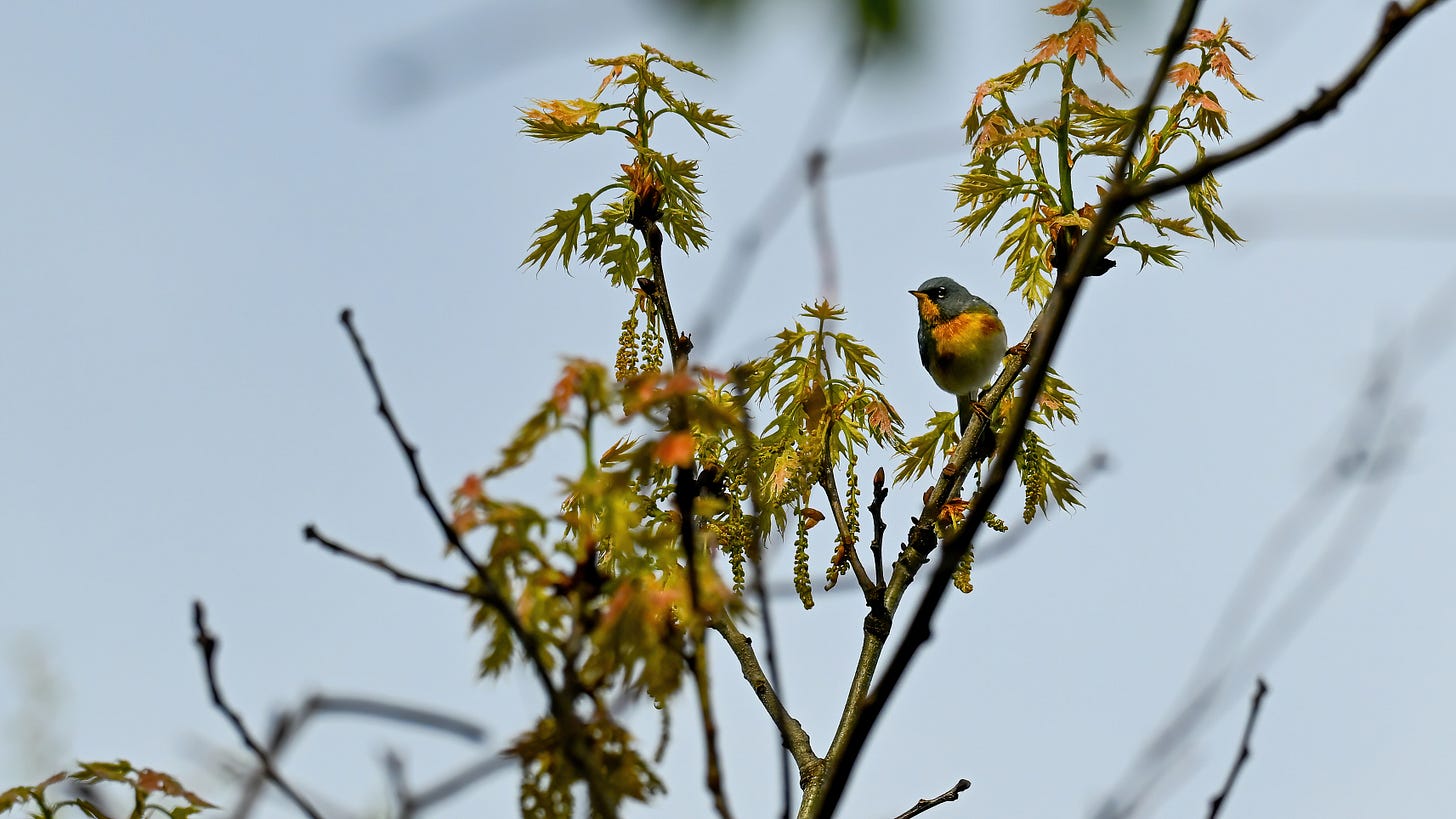

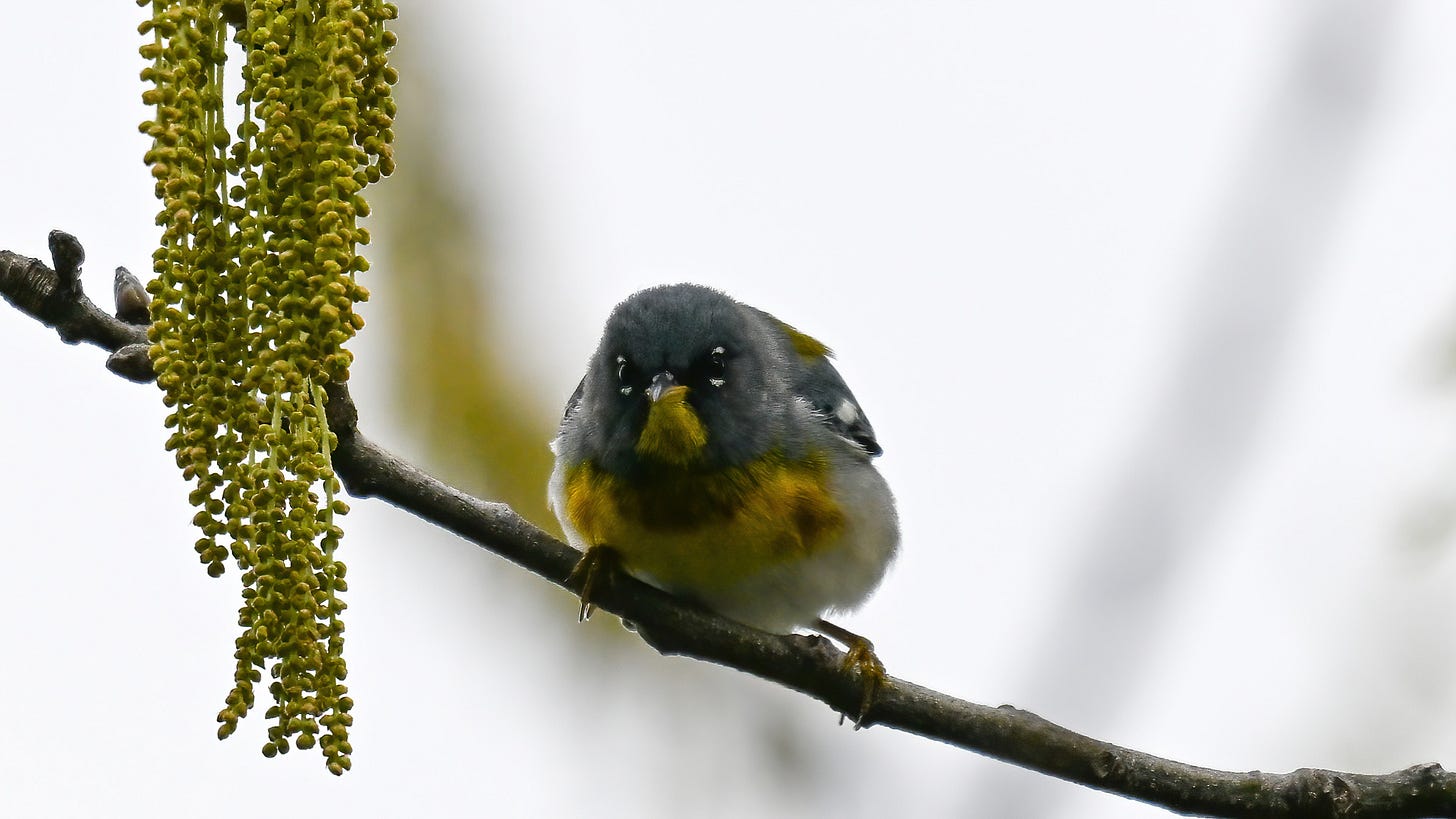
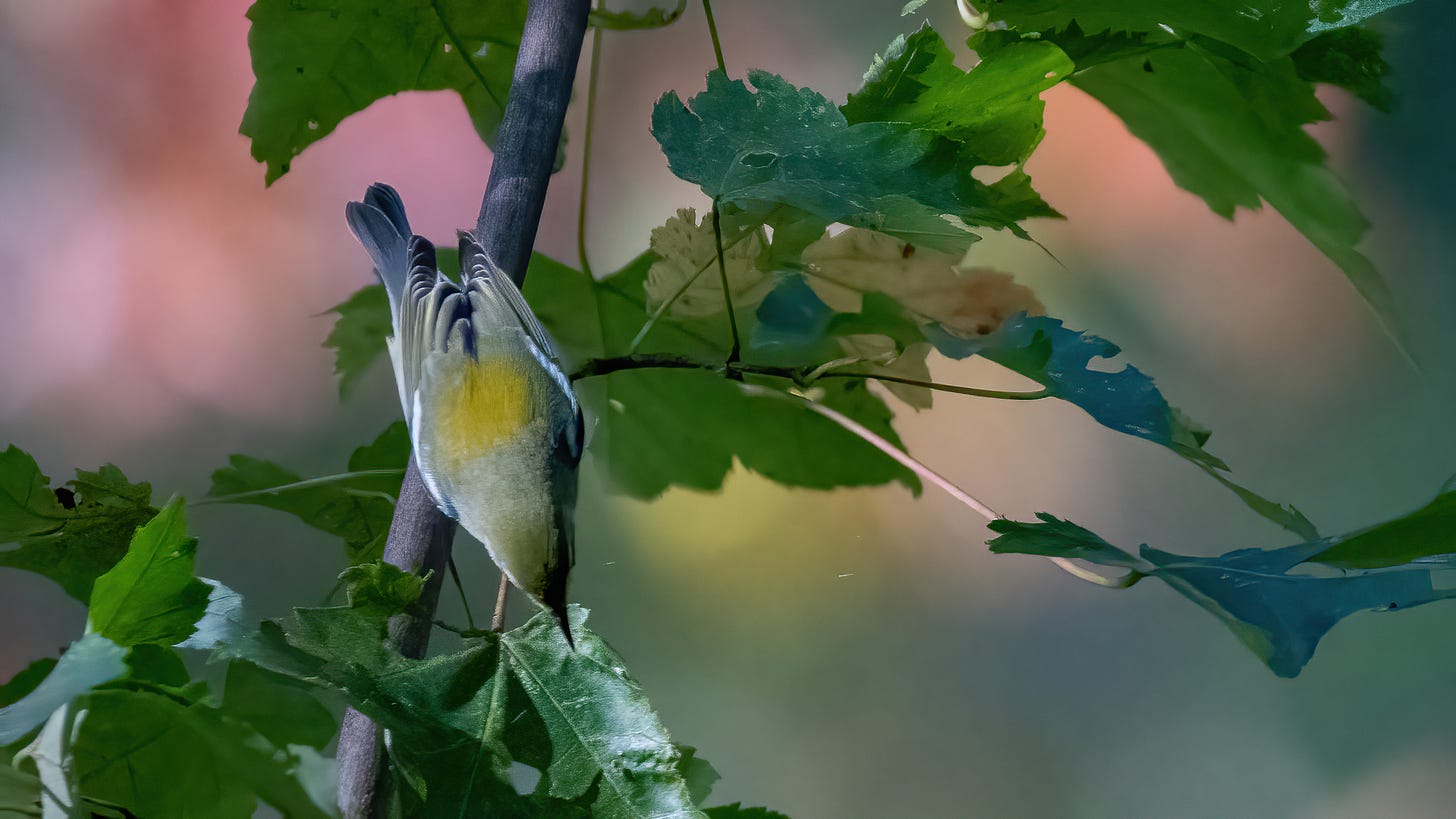
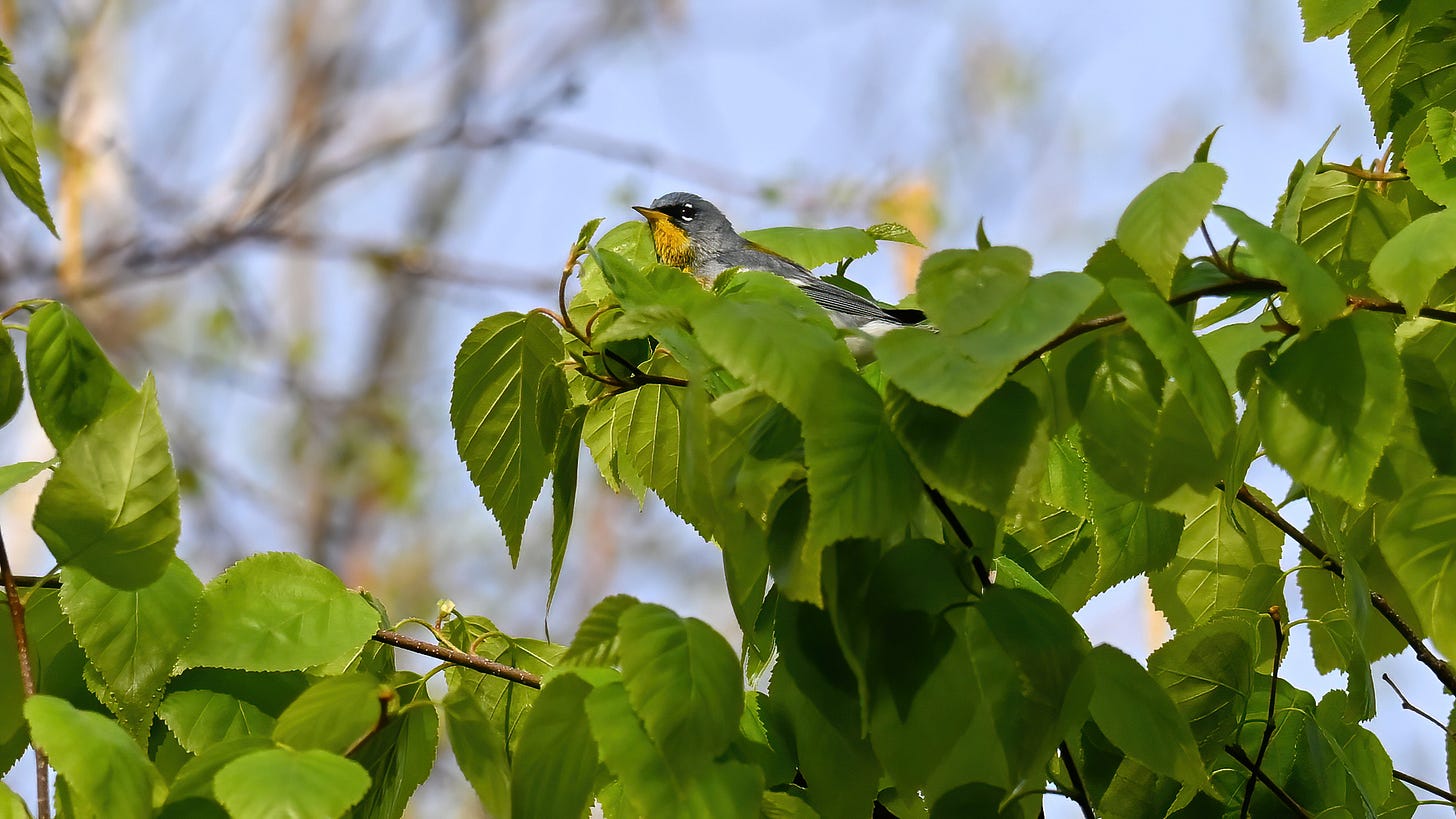
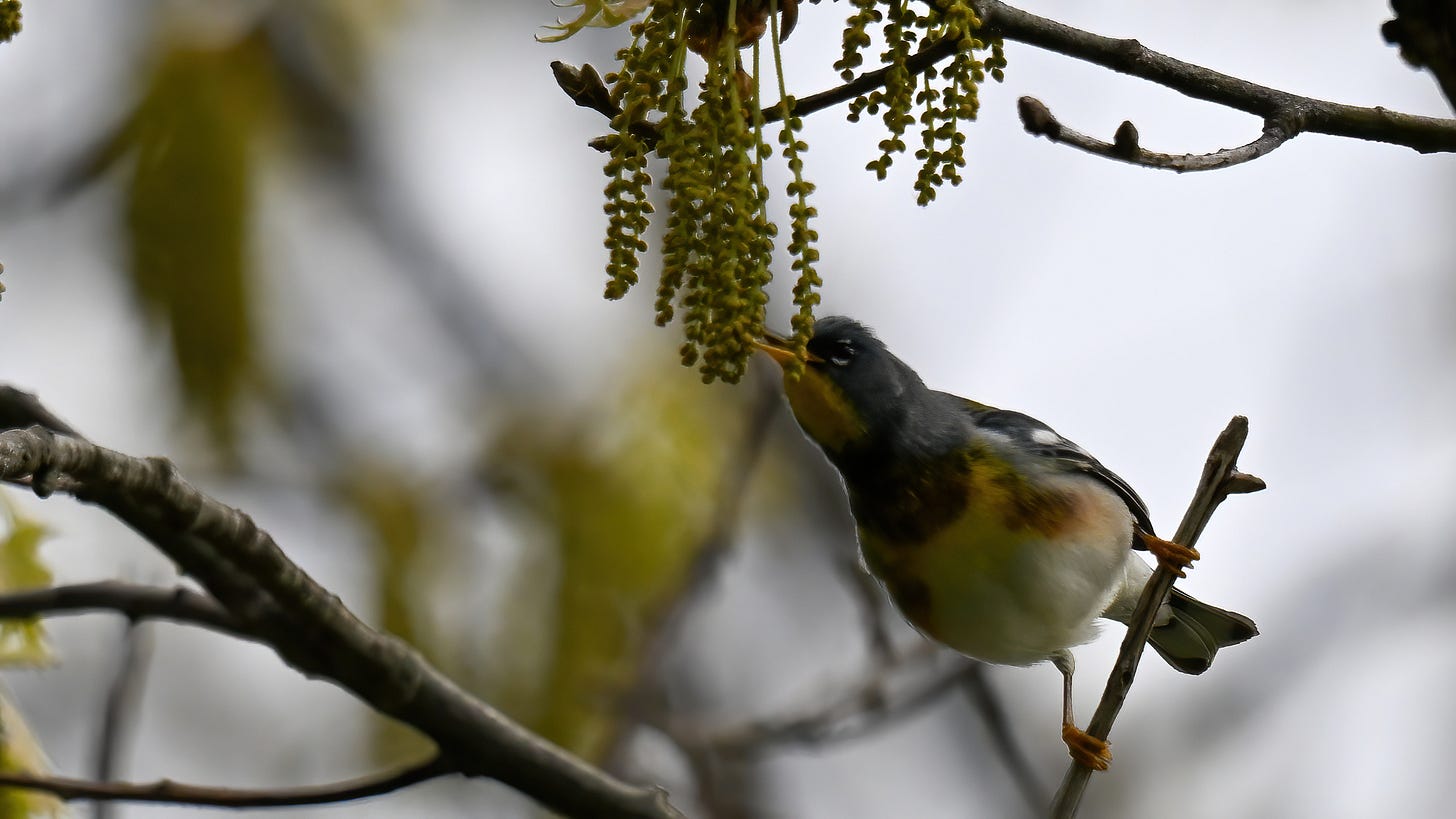
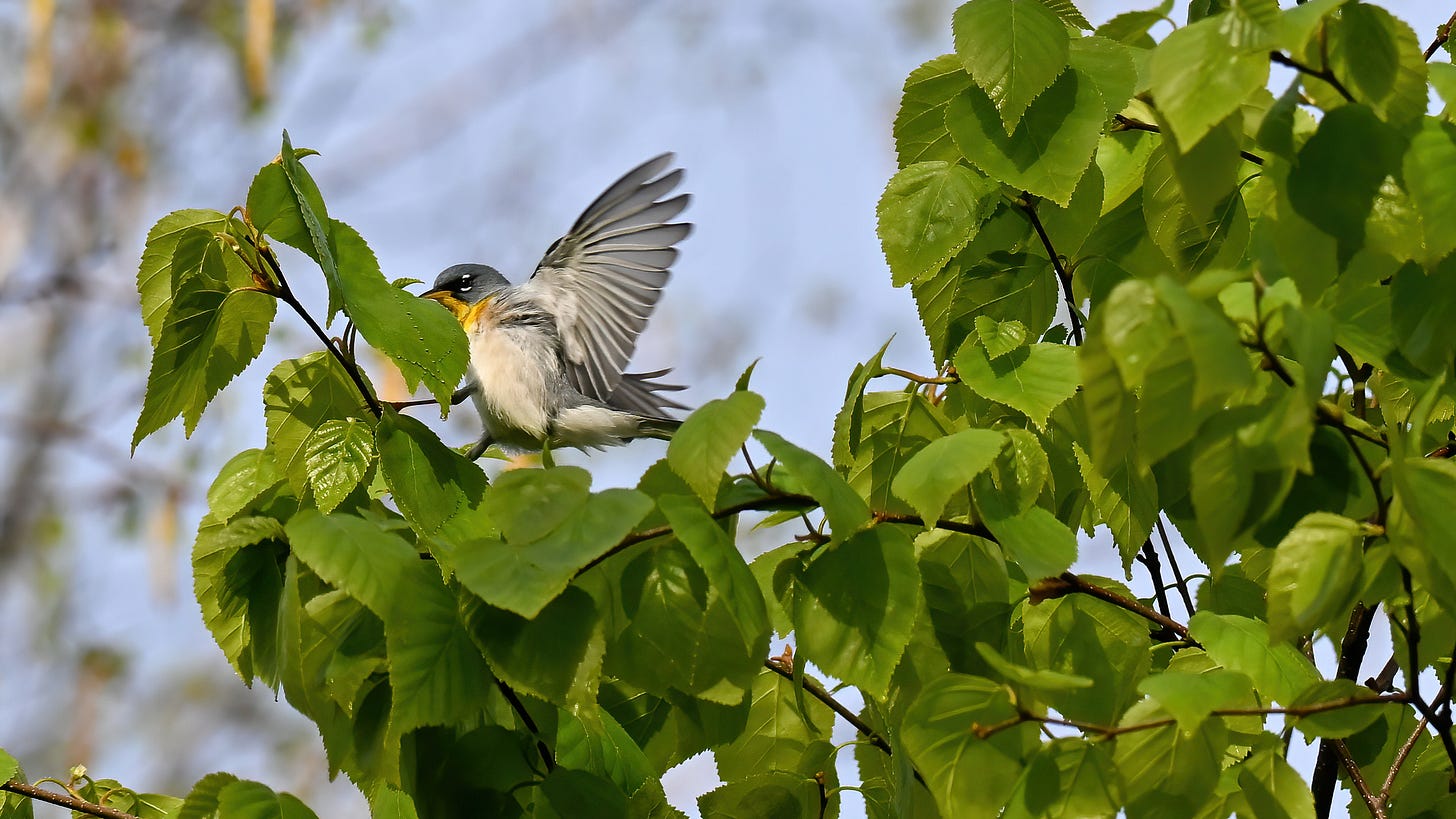
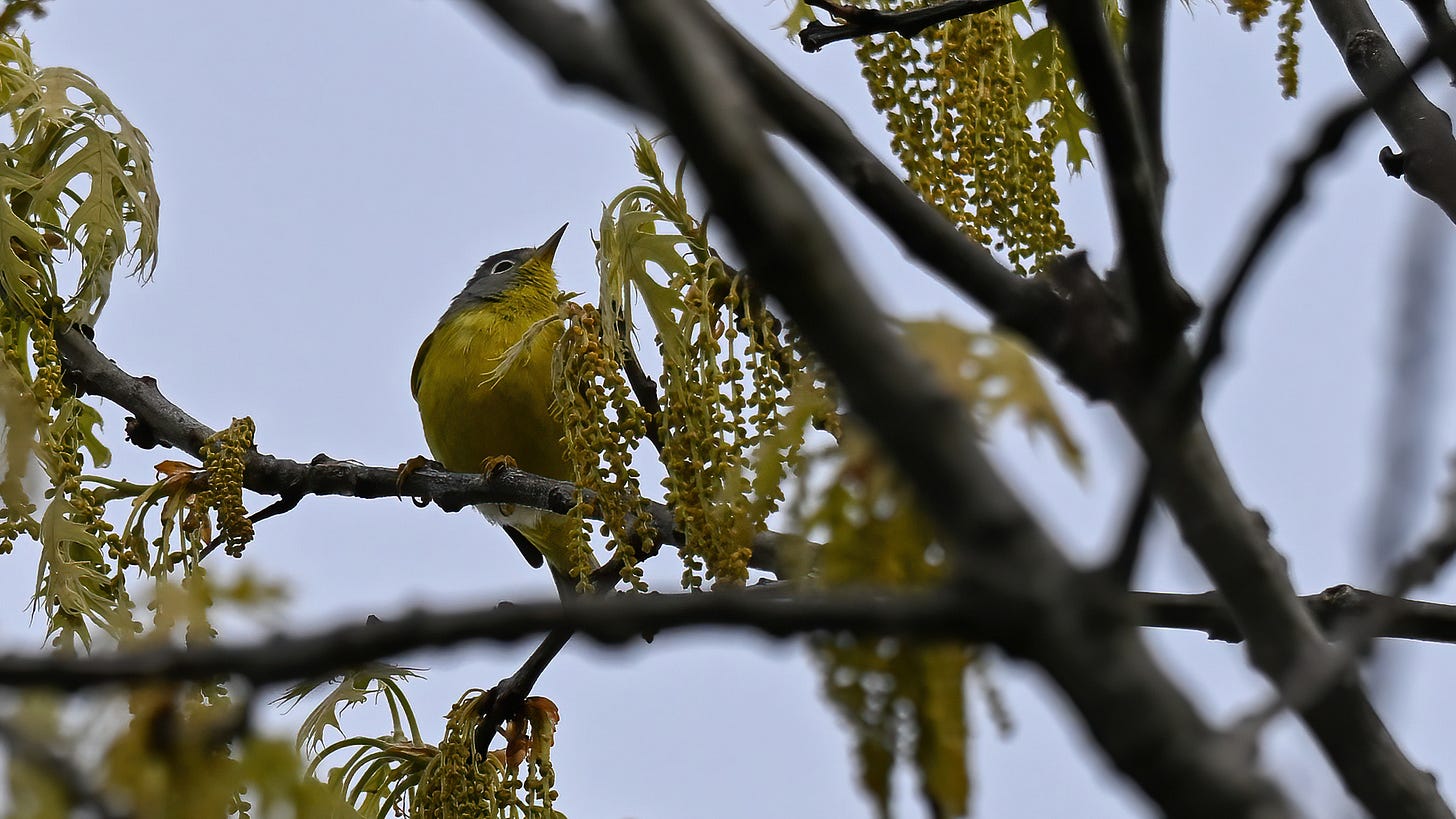
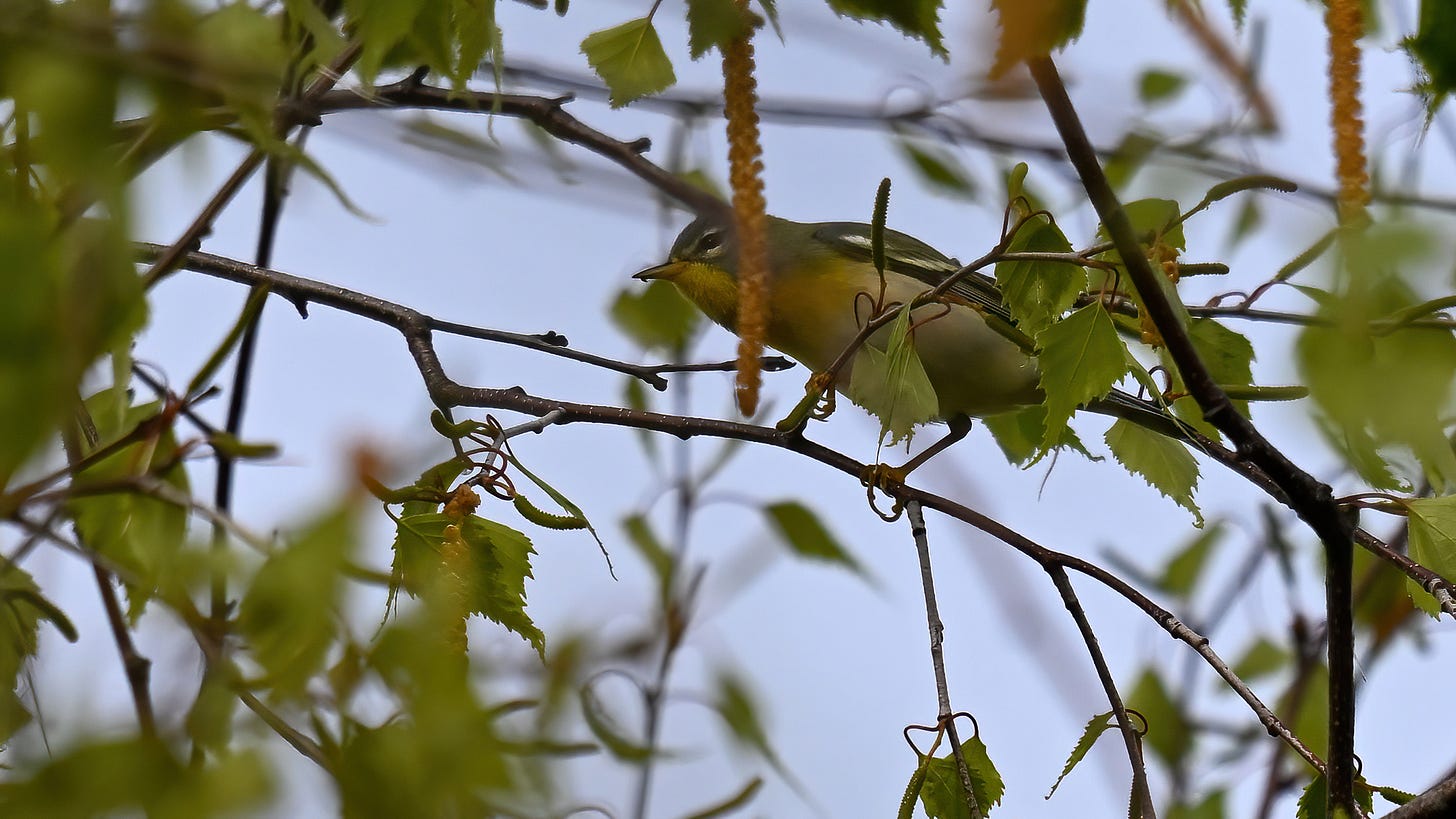
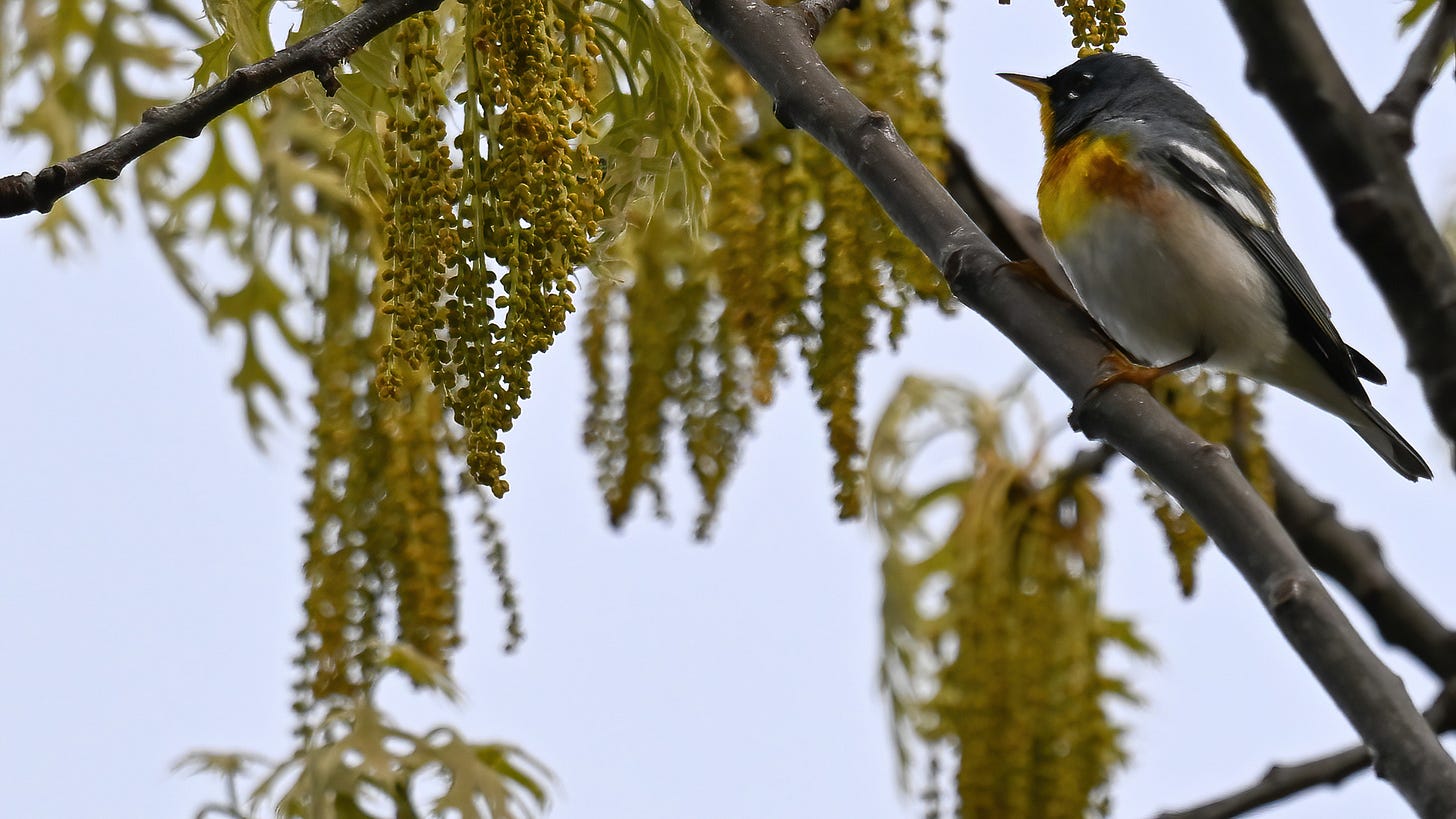
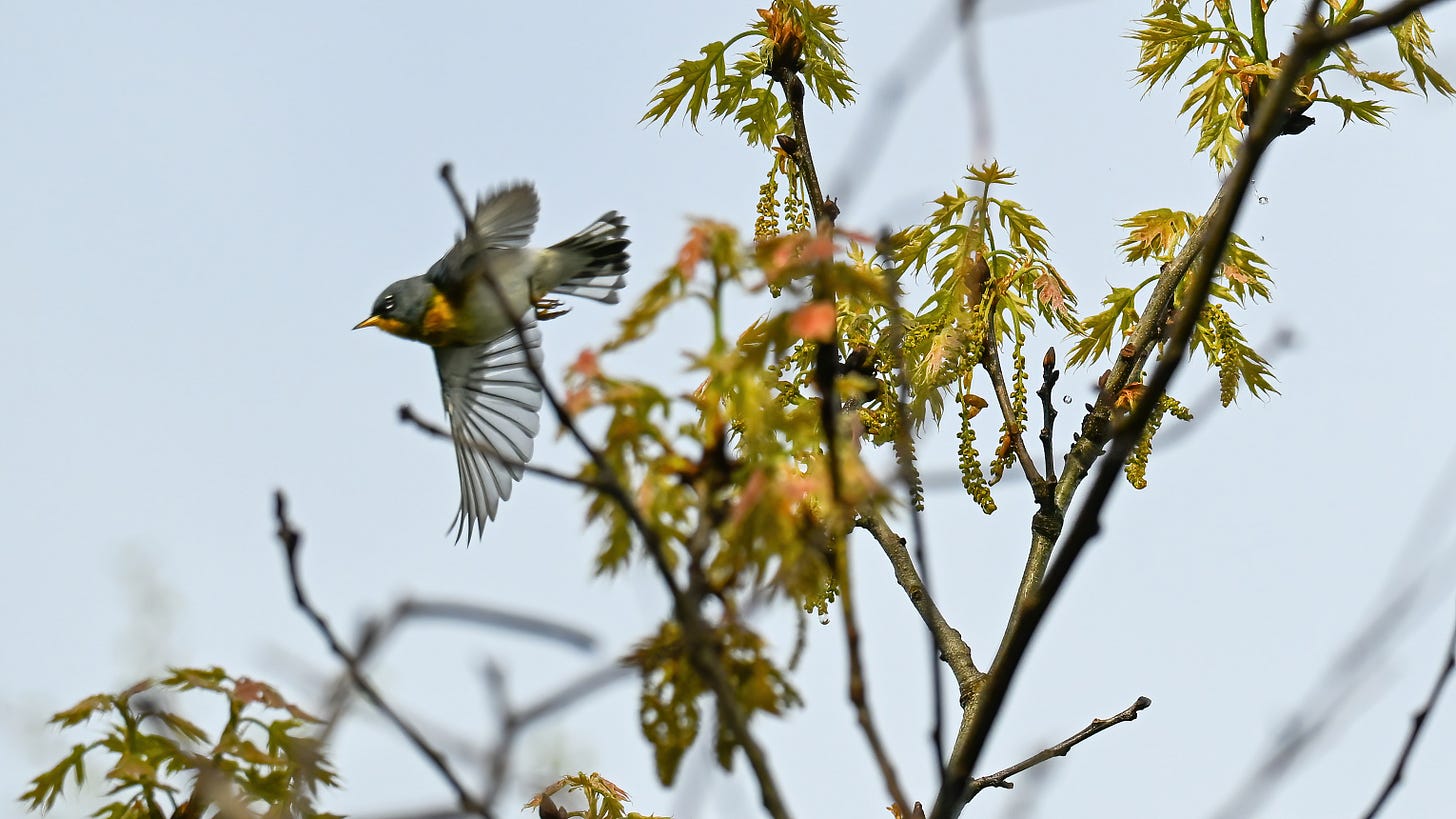
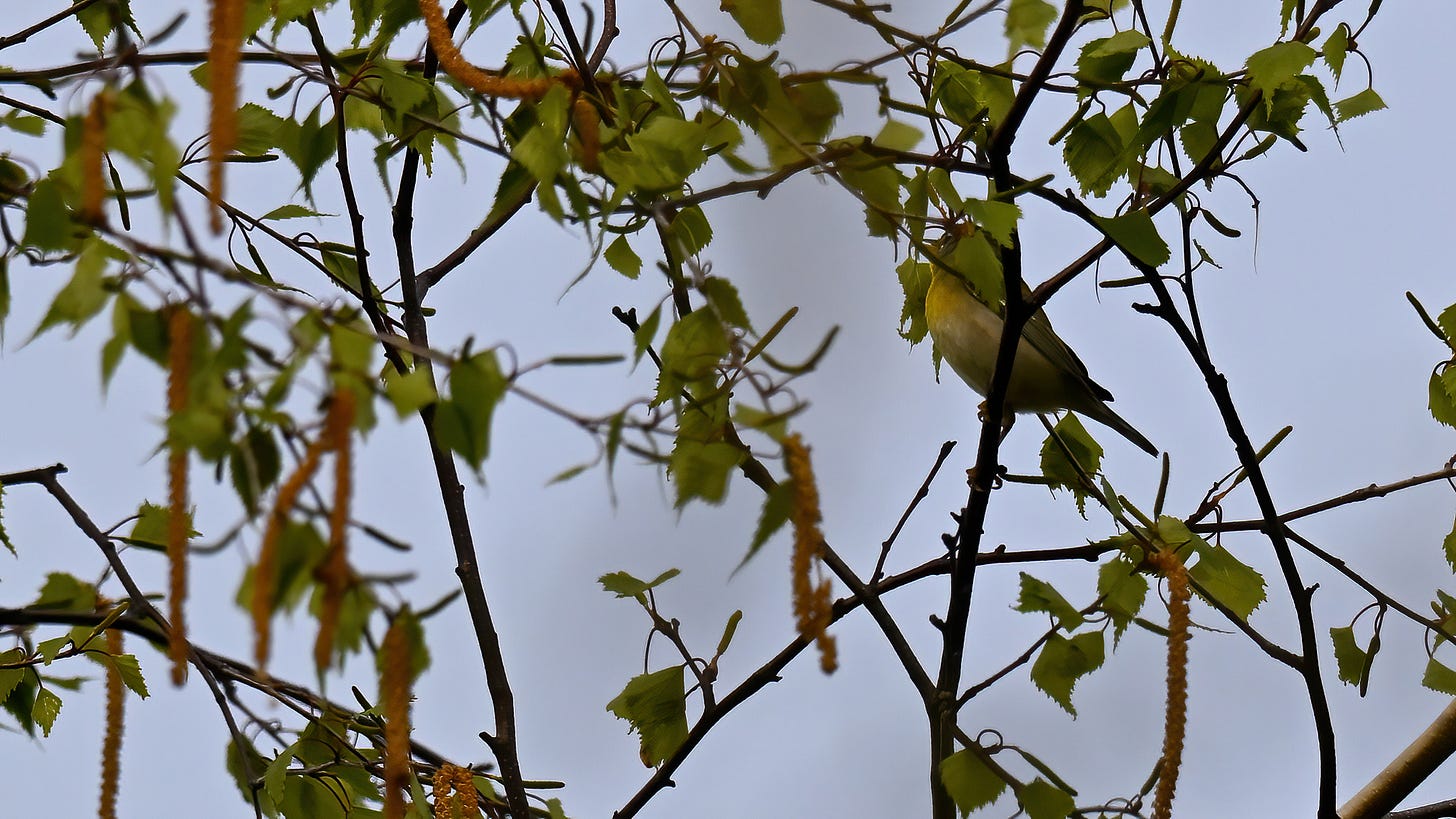


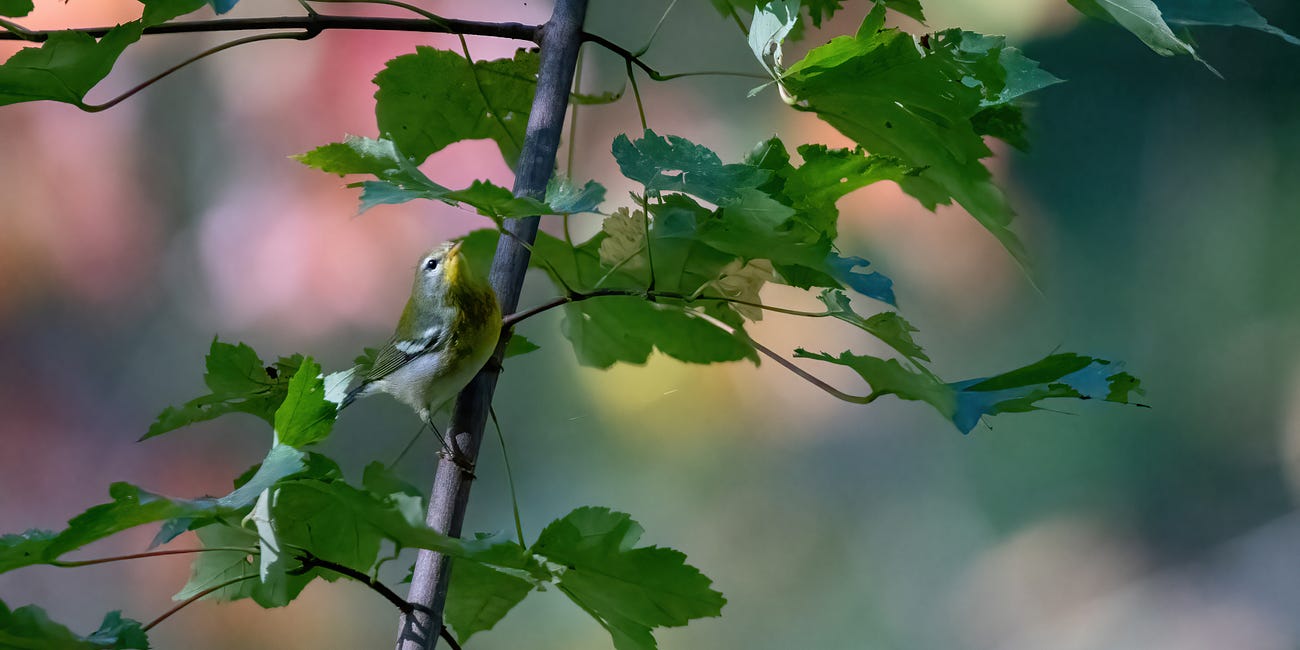
Beautiful tiny bird. My fav photo of this grouping is number 9 from the bottom (depending on how I count). It’s the one with the Pa-RUH-lah landing on the branch with its wings open behind its head. Love 💞
Beautiful little birds - thanks!